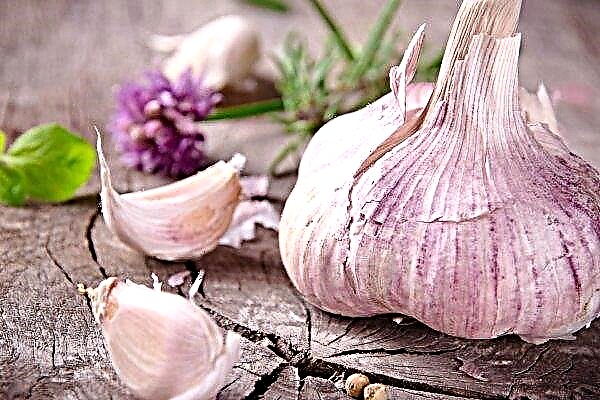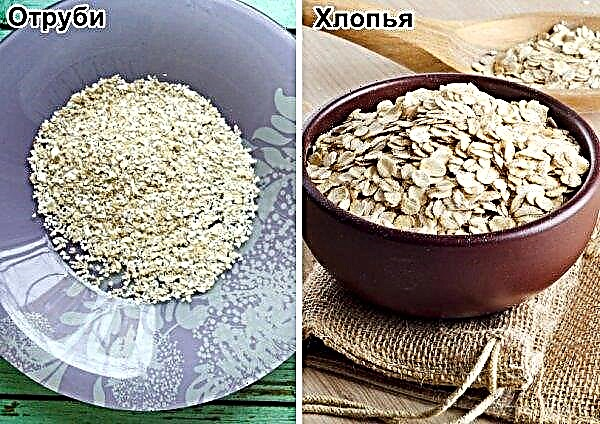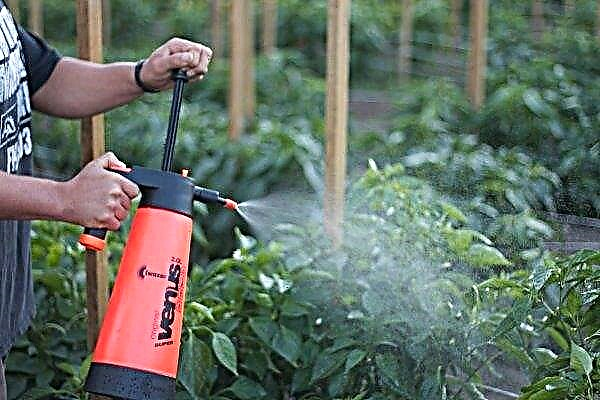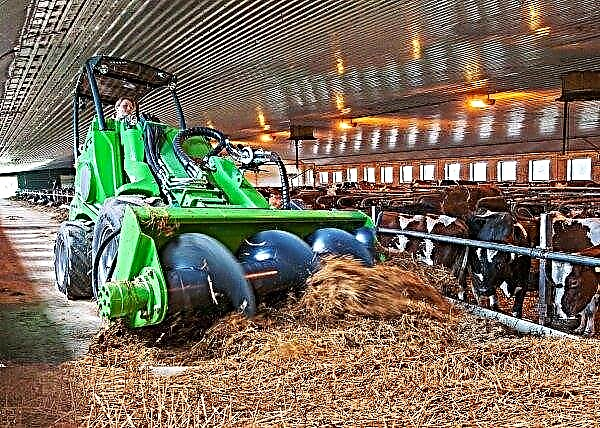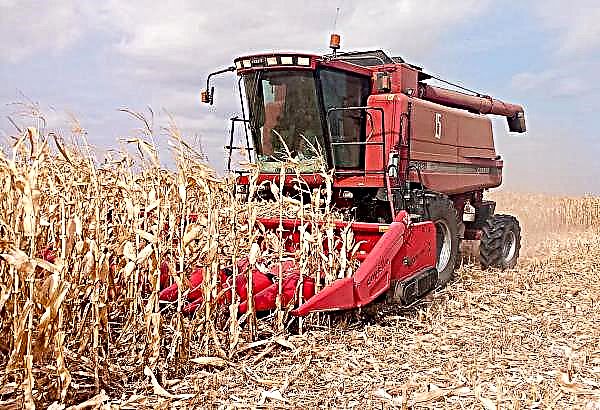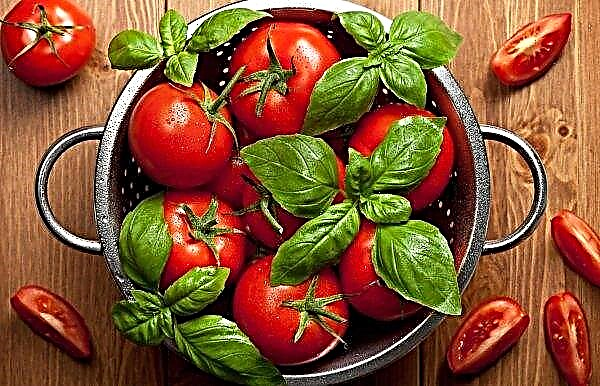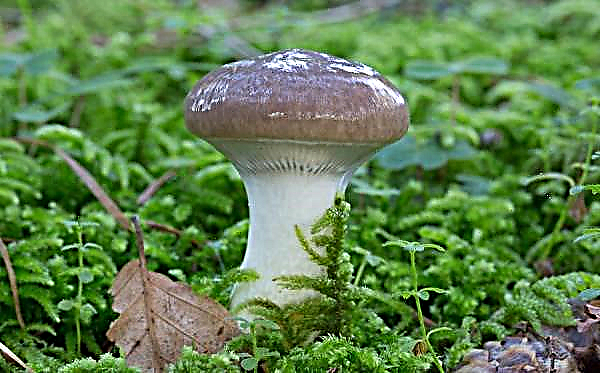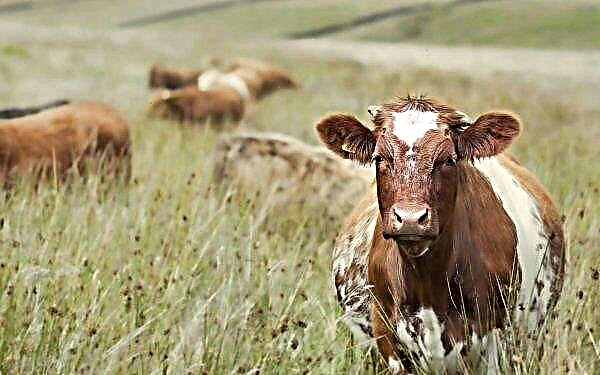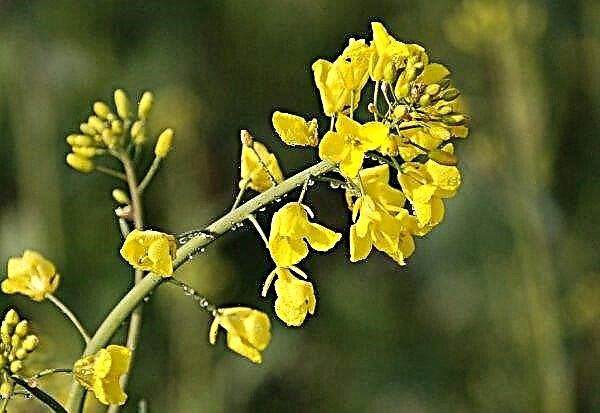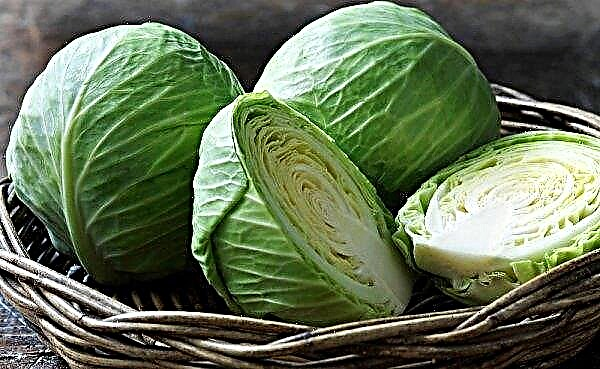Since ancient times, man has grown cereals, which are an important source of food for it, since they contain a large amount of protein and starch. Among the most popular plants of this family are wheat, rye, oats, corn, rice, millet. The technology of cultivation of millet on the field and the garden is described in the article.
What is millet and millet
Millet is an annual or perennial grass. Among other cereals, this plant is distinguished by increased resistance. It can grow in dry soil without problems, normally tolerates heat.
Botany has 442 species of millet, 8 of them grow on the territory of Russia. To obtain grains used in food, millet is usually cultivated. In this plant, the stem reaches a height of 45–150 cm. The fibrous rhizome grows 1.5 m deep in the soil. It reaches 1.2 m in width. The stem grows branched. The leaves of the plant are alternating, linear-lanceolate in shape, pubescent or bare, long.
Their length is 18–65 cm, width is 1.5–4 cm. The inflorescence is formed in the form of a panicle 10–60 cm long. Spikelets with two flowers are located at the ends of the branches. The fruit is a rounded or oval-shaped caryopsis. It can be white, red, brown, yellow.

Millet is used as a valuable nutritious culture. Today, its cultivation is carried out in India, China, North Africa, Russia, Ukraine, and the Middle East. It is rich in starch, protein, fats, fiber, carotene, vitamins B1, B2, PP, copper, nickel, zinc, manganese. It is used for cooking first dishes, cereals, culinary products. It also goes to feed animals and birds. This culture is often used as insurance in case winter and spring crops die.
Did you know? Cereals grow on all continents. Even in Antarctica, 2 species grow that belong to this family — Antarctic pike and annual bluegrass.
Millet is called cereal obtained from cultivated species of millet. It is made by peeling and releasing from spikelet scales. It has a high protein content of about 11%. From cereals, cereals, soups are prepared, and also used to prepare cereals.
Types and varieties of millet
Despite the fact that 8 types of millet are grown in the Russian Federation, 2 are most popular: ordinary (sowing) and capitate (bristly, Italian).

The second has several varieties:
- spreading;
- compressed (drooping);
- leafy;
- semi-oval (oval);
- lumpy.
Breeders have bred a large number of varieties of the described cereal crop. To choose the best one, you should familiarize yourself with the features of the most popular. Among these, it is worth noting the following:
| Grade name | Grain color | Main characteristics |
| Cinderella | yellow |
|
| Lana | light yellow; |
|
| Remote | golden |
|
| Saratov 853 | red |
|
| Kazan 506 | golden |
|
Millet yield from 1 ha in Russia
Millet is able to produce crops, growing in not very favorable conditions - in arid, sultry. With a favorable climate and proper care, crop yields reach 14–17 kg / ha. The maximum grain record was obtained in 1943. It amounted to 200 c / ha. In Russia, millet today is grown mainly in the Volga region and the Central Black Earth region.

Sowing rules
To regularly get maximum yields, you must follow the recommendations for sowing, agricultural technology and the harvest of millet. This crop is undemanding to soil. It grows well in oxygen-enriched soils. In too dense or humid lands, developmental delay or death may occur. When sowing, it is important to follow crop rotation rules.
Important! The worst precursors for millet are barley, corn, and Sudanese herbs. It is undesirable to plant it after winter crops.
According to them, it is better to sow the described cereal crop after such plants:
- sunflower;
- soybeans;
- perennials;
- legumes;
- potatoes;
- sugar beet.

The timing
When sowing, it is important to adhere to temperature indicators, since millet loves heat. Seed germination occurs at a temperature of + 25 ... + 30 ° C. If the temperature indicators are below + 8 ° C, they will not hatch, and if the seedlings have already appeared, then they will die. At + 8 ° C the sprouts should be expected after 1.5–2 weeks after planting, at + 15 ° C - after 4–5 days, at + 20 ... + 25 ° C - the sprouts will appear after 3 days.
So that germination is successful, you should adhere to the recommended planting dates. This procedure must be carried out, when the soil is warmed up at a depth of 8–10 cm to + 10 ... + 12 ° С. Usually in Russia such conditions have been observed since the end of April. The deadline for planting is mid-June, when harvesting for green mass - July. Also, millet can be sown before winter.
Seeding rates
There are several ways to sow millet.
The choice depends on several factors, namely:
- how fertile the soil is;
- what crops preceded the sowing of millet;
- how clogged the field is;
- what is the degree of soil moisture.
If sowing is carried out on a fairly fertile, clean, well-moistened field, then you should choose the lower case method. In clogged places where there is a moisture deficit, it is worth sowing with the wide-row tape method according to the scheme 60 × 15 × 15 cm or 45 × 15 × 15 cm. Also, line sowing, in which the distance between rows is 45 cm, is suitable. With the line method, the seeding rates fluctuate from 2.5 to 4 million seeds per 1 ha. With wide-row sowing, they amount to 2.5 million seeds per 1 ha.

Sowing process
Before sowing, the site should be prepared, cleaned of weeds and fertilized with the basic necessary elements - phosphorus, potassium and nitrogen. To plant 1 kg of grain, 1.5 kg of nitrogen-containing, 2–3.5 kg of phosphorus-containing and 1 kg of potash fertilizers are required.
Seeds also need to be prepared. They should be dried, decomposed in air in one layer for a week, and disinfected with preparations of “Fenoram”, “Baytan”, “Formalin”. Processing should last 2 hours. After this, the seeds should be dried again.
Important! Fertile fields and those that were fertilized during the cultivation of beets and potatoes do not require fertilizer.
Another recommended procedure is to saturate the seed with moisture. To do this, it should be moistened 5-6 times with water, heated to + 30 ° C. The hydration process helps to accelerate the appearance of seedlings and increase the chances of friendly seedlings.
Only after carrying out the necessary procedures should one begin sowing in a suitable way. In a sufficiently moistened soil, the seeds are planted to a depth of 4–5 cm. If the top layer is dry, then they can be deepened to 7–8 cm. In light soils, seeding can be done by 10 cm.
Video: Millet sowing process
Care
A plentiful harvest can be obtained not only by observing the planting procedure. It is also important to carry out competent care. It consists of two procedures: rolling and harrowing. Preventive measures should also be taken so that crops are not affected by diseases and pests. With the manifestation of characteristic signs indicating infection, it is necessary to begin treatment as soon as possible.
Rolling
This procedure is carried out with ring or ring-spur rollers. It allows you to improve the contact of seed material with soil. Also, post-sowing rolling leads to the fastest swelling of seeds. Undoubtedly, it affects the increase in productivity. The procedure should be carried out only in regions characterized by droughts. If millet is sown in fields located in areas where rainfall is regular and sufficient, then you do not need to roll crops.
Harrowing
This procedure is carried out by light sowing, mesh, tooth middle harrows. It is recommended to eliminate weed seedlings of weeds in time and prevent the appearance of a hard crust on the surface of the earth. It is best to carry out the procedure when weeds appear in bulk. The depth of harrowing should be less than the depth of the seed. Otherwise, seedlings can be injured. Harrowing should be done across rows at a speed of 5 km / h.
Another good time for pre-emergence harrowing is tillering. At this time, the culture should be well rooted. If seedlings have already appeared, then harrowing should be carried out only in case of urgent need, for example, with severe clogging, the formation of a crust. You need to do it very carefully, otherwise you can thin out the plantings, which will negatively affect the yield. During this period, harrowing is carried out with rotational hoes.

Millet diseases and their treatment
If you make mistakes during planting, ignore pre-sowing seed treatment and post-sowing care procedures, there is a risk that the plant will be affected by bacteria, fungi or attack by pests. It is important to take preventative measures to prevent this from happening. These primarily include compliance with crop rotation rules, timely cleaning of soil from weeds. Removal of weeds must be done 2-3 times during the growing season.
If infection could not be avoided, then you will need to resort to treatment. Most often, millet is affected by smut, helminthosporiasis, striped bacteriosis, mosaic, bacterial spotting. Symptoms and methods of treating these diseases are shown in the table.
| Disease name | Symptoms of infection | Methods of protection and treatment |
| Smut | swelling in the vagina of the upper leaf 3-5 cm long, covered with a pinkish film |
|
| Helminthosporiosis |
|
|
| Striped bacteriosis |
|
|
| Bacterial spotting |
| The methods are the same as with striped bacteriosis. |
| Mosaic |
|
|

Pest Control Methods
Danger to millet and pests. If they are not destroyed in a timely manner, they can cause the spread of various dangerous diseases. The greatest danger to the described cereal crops are the insects shown in the table.
| Pest name | Symptoms of lesion | Methods of protection and treatment |
| Millet mosquito |
|
|
| Stem moth |
|
|

Harvest
The ripening of millet is stretched over time. Cleaning is done by direct combining. It is carried out at the moment when 90% of the grain has ripened. They also use a separate method, which is started at the time of maturity 80–85% of the crop. Subsequently, such a grain is left to ripen in the rolls.
You can find out that the crop is ready for harvesting by yellowed spikelet scales. In this case, only the upper part reaches full ripeness. The lower one is always immature. After harvesting, the crop is threshed, folded into piles and cleaned with grain cleaning machines. If the grain contains a lot of moisture, then it is aerated and dried in drying units.

How to sprout millet at home
When planting in a small area, the seeds can first be germinated in the greenhouse. Thus, fruiting will come earlier and will be more plentiful. Seeds are planted in a large box or in a special container for seedlings. The soil should be mixed with perlite or sand. Seeding depth - up to 6 mm. The distance between the seeds should be observed at 5–7.5 cm. When a sufficient amount of light gets in and at a temperature of + 25 ° C, sprouts should be expected after 3-4 days. Water should be regularly watered so that it is slightly moist.
Did you know? The fastest growing plant on Earth is bamboo, which belongs to the Cereal family. The growth rate of some varieties is 50 cm per day.
Planting sprouts in open ground should be done when it warms up to at least + 10 ° C. For each seedling, you should dig out a separate hole and move it by the method of transshipment, that is, without destroying the earthen coma. Grain storage is carried out in dry conditions, at a moisture level of 13-14%.

So, millet is a valuable cereal crop widely used in cooking and animal husbandry. It is easy to grow. The main thing is to choose a good variety, competently plant and provide at least minimal care.

